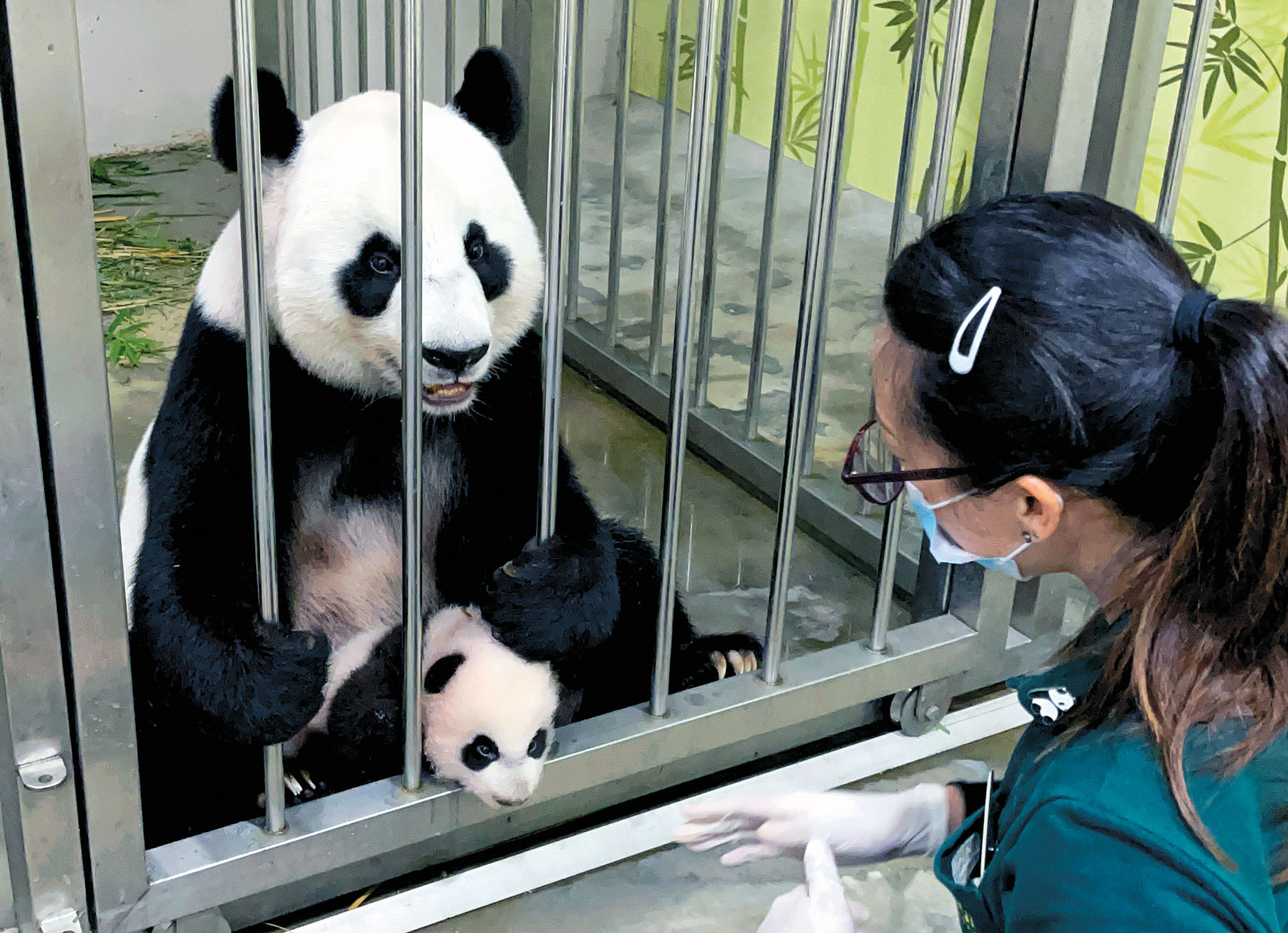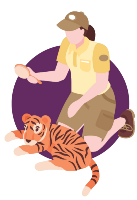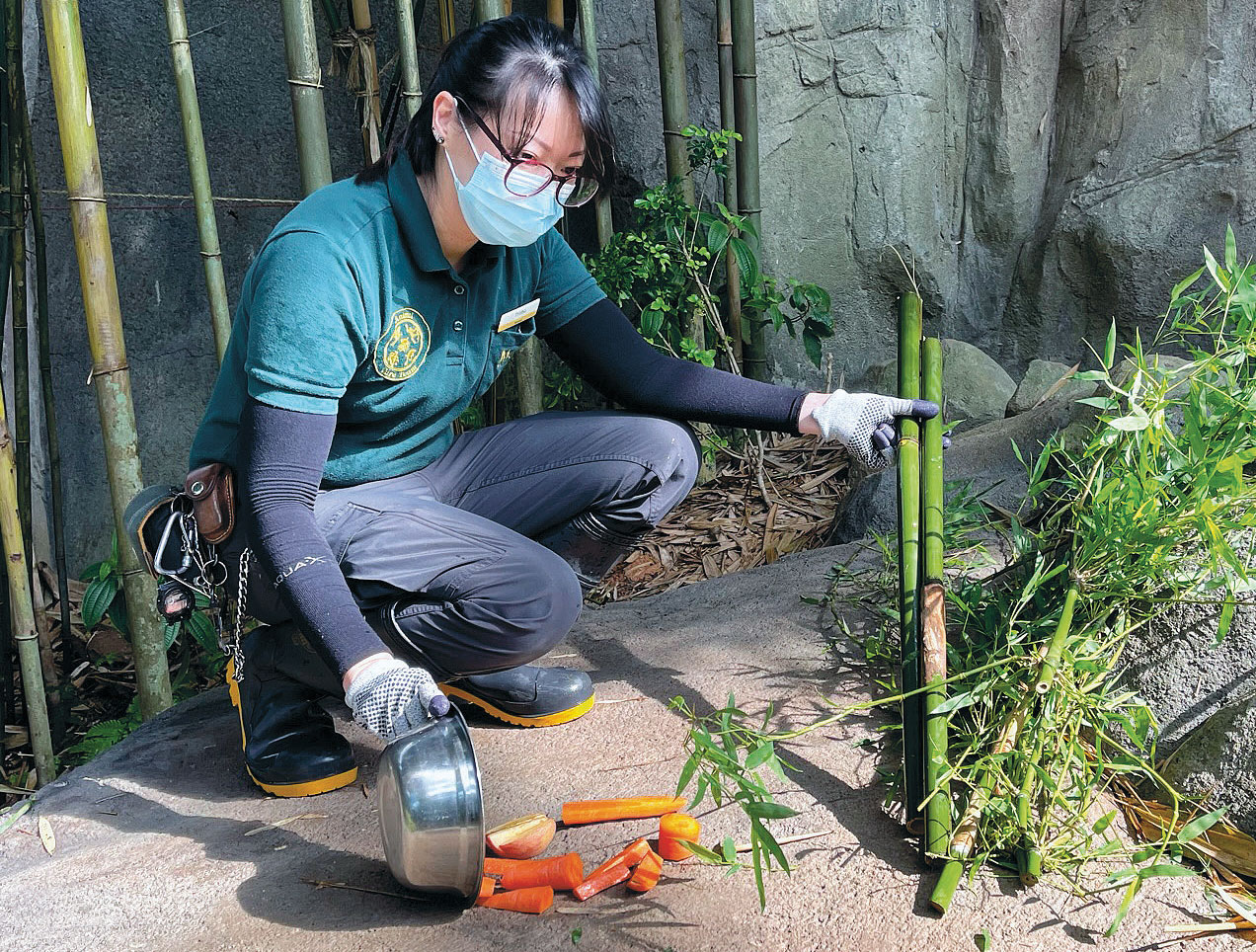Bear-ing It With Grace
Caring for the River Wonders’ most high-profile inhabitants has taught Ms Trisha Tay Ting Ni (Science ’05) about parenting, passion and perseverance.
 Outside the panda exhibit with Kai Kai in the background.
Outside the panda exhibit with Kai Kai in the background.
Young parents learn a lot about caring for their kids from their loved ones and fellow parents. But Ms Trisha Tay picked up parenting tips from a unique source: Jia Jia and Kai Kai, the two giant pandas she has been looking after since 2012. Tasks like feeding the animals multiple times a day and settling them in for naps were like a preview of parenthood, says Ms Tay, 38.
That “glimpse into the future” came in handy when she had children of her own. “I see similarities between parenting young children and training animals,” explains the mother of two children aged eight and five. “Things don’t always go your way, and you always need to factor in whether the children or animals ate properly, are being moody or did not sleep well.”
 Ms Tay checking on Le Le, then 78 days old, on 30 Oct 2021.
Ms Tay checking on Le Le, then 78 days old, on 30 Oct 2021.
Being so close to Jia Jia and Kai Kai means that Ms Tay can easily identify the traits of each that have passed on to their cub Le Le, who was born to much fanfare last year. “He is fast in figuring things out and remembering how to climb up and down certain structures, like Jia Jia who is quite smart. But he is also calm like his dad, Kai Kai.” She adds with pride, “Le Le is growing well and getting much better at climbing in the exhibit with Jia Jia. Like all cubs, he is playful and curious, and loves exploring his environment. He seems to take after his mum a little more.”
Her eyes brighten as she describes the giant panda family, revealing just how zealous she is about her job. It makes sense: after all, this been a lifelong passion for Ms Tay, who started volunteering at the Singapore Zoo as a keeper at the age of 15. “I would volunteer once a week with different animals,” she says. She enjoyed it so much that she considered quitting junior college at one point. “But my mother talked me out of it and I decided to take up Life Sciences at NUS.”
 WHAT IT TAKES
WHAT IT TAKES
Five traits that people working with animals need, according to Ms Tay:
- A keen sense of observation
- Patience to train the animals
- A can-do attitude to take on new challenges
- Being adaptable
- Remaining calm in various situations
 Ms Tay and her family.
Ms Tay and her family.
 Placing treats for her charges in their exhibit.
Placing treats for her charges in their exhibit.
A WALK ON THE WILD SIDE
Upon graduation and after a short stint overseas, Ms Tay worked at a desk job but found herself uninspired. “I was unsure what to pursue next and took a while to figure this out before coming back to volunteering at the zoo — and eventually joined the animal care team,” she says. In some ways, she started a second career when her peers were already established in the paths they had taken early on. Yet Ms Tay has no regrets. “This was something I wanted to pursue when I was younger, so it made sense for me to start off here again as I had the relevant volunteer experience and educational qualifications.” But she admits that it is not always butterflies and rainbows. “Every career, (even one that you’re passionate about), has good and bad parts, ups and downs, and it will never be smooth sailing all the way,” she shares. “During stressful periods, you might wonder if this is really for you — but if you don’t find yourself dreading to go to work each morning and still find joy in your job, then keep pursuing your passion. Sometimes, the rainbow comes just after the rain!”
Photos of Ms Trisha Tay at work: Mandai Wildlife Group